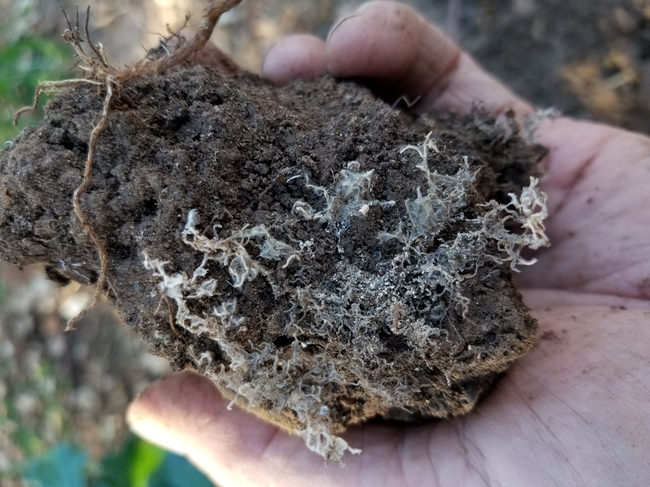"Mycorrhizal inoculants should be added to planting holes when installing woody ornamentals in landscapes" MYTH!!!!!! Read on:
Chalker-Scott, L. , Extension Specialist And Associate Professor, Washington State University
Downer, A.J., Farm Advisor, University of California
Beneficial fungi called mycorrhizae associate with roots of woody plants in a mutualistic relationship that benefits each partner. Decades of research have shown how plants inoculated with mycorrhizae grow faster and larger than those without these fungal partners (Carpio et al., 2005). This knowledge has prompted entrepreneurs to market mycorrhizal inoculant products as planting amendments, claiming they will ensure establishment of landscape plants. Mycorrhizal inoculants are often seen in container (potting) media, organic fertilizers, or sold separately as growth promoting products, but their efficacy is often unproven, especially in landscape situations (Chalker-Scott, 2017).
Misconceptions about mycorrhizal products are common:
- My soil is “poor” so I have to add the mycorrhizae to my garden. Most soils are already inoculated with mycorrhizal fungi, so they do not need to be added. Plants will form mycorrhizal associations in most soils without additional inoculant. Soils where mycorrhizal inoculants have been effective in promoting plant growth responses are extremely disturbed or toxic, such as mine spoils or severely “cut” sites where all surface soil is removed and plants are being grown in subsoils.
- Mycorrhizal inoculants will support my aging or dying tree. While research shows that mycorrhizae play a role in plant defense from pathogens (Linderman, 1988), there is no evidence to suggest that inoculants can provide additional benefit to previously inoculated plants.
- Mycorrhizae will promote growth of my established trees. There is no published work to indicate inoculation of established trees will promote their growth; Appleton et al. (2003) reported no effect from this application.
- The mycorrhizal inoculant contains viable spores. Biological products have limited shelf life. Research on commonly available inoculants showed that over 50% of the products available to consumers were not viable (Corkidi et al., 2003). Mycorrhizal fungi have naturally low viability of their spores so if a product does not have hyphal fragments included, it may not be viable.
- If I inoculate with mycorrhizae I don't need to fertilize my plants. Mycorrhizae aid in nutrient uptake (especially phosphorus), but they do not cure nutrient deficiencies, especially when the soil is deficient in those minerals. Research indicates that mycorrhizae can enhance uptake of normally available soil nutrients, but the soil has to contain them in the first place (Corkidi et al., 2005).
If I add mycorrhizae I will bring life to my soil. If a soil is devoid of microbial activity, it is likely an unsuitable soil for mycorrhizae to grow in. Just like plants, mycorrhizal fungi need good soil conditions in which to grow. Compacted, flooded, or contaminated soils are also harmful to these fungi, so they will not cure a toxic or otherwise non-arable soil.
Read on:
